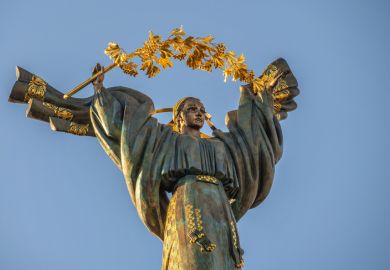If games get the history they deserve, Rugby Union must have transgressed horribly. The television series introducing ITV's World Cup coverage opened with an uncritical retelling of the legend that the game started with Rugby schoolboy William Webb Ellis showing a "fine disregard for the rules" by running with the ball in 1823 - a prototypical invented tradition whose finest disregard is for the rules of historical evidence. That tired old fiction will get a fresh transfusion over the next month as the world's best players compete for the Webb Ellis trophy.
While serious historians ignore a game which has made an impact on several societies, such rubbish will retain its currency. But there is happy evidence of change, notably in the work of Gareth Williams of Aberystwyth University, co-author of the path-breaking Welsh history Fields of Praise (1981), whose 1905 and All That (1991) further explores linkages between rugby and national identity. If anywhere has been more rugby-conscious than South Wales, it is New Zealand - it is reckoned that in the 1950s about 40 per cent of the male population were involved in the game. New Zealand rugby boasts a brilliantly evocative picture of this period in Warwick Roger's Old Heroes (1992), but has yet to find its Gareth Williams.
Greg Ryan, an excavator rather than a stylist, is not necessarily the man. But he has made a fine start with this engaging and concise account of the 1888/89 Maoris. Sporting lore alleges that nobody remembers who comes second. Yet the Maoris have been forgotten while posterity records only too well their New Zealand successors, who have adopted their All Black colours and treated Europe much as the Vikings treated Northumbria, on tours since 1905.
Two questions concern Ryan. How do the Maoris compare with their fabled successors, and why have they been forgotten? Contemplating their mind-bogglingly arduous programme of 107 matches plus two trans-world boat journeys in 14 months, he makes a convincing case that they compare rather well.
Seeking reasons for obscurity he notes embarrassment over veiled professionalism, drunkenness, exploitation by promoters and rows over refereeing - none of these exactly unknown on subsequent rugby tours - plus a paucity of contemporary accounts and the relatively underdeveloped New Zealand national consciousness of the time.
But it is a pity that Ryan - who can fairly retort that no masters thesis can consider everything - says little about the position of Maoris in New Zealand society little more than a decade after the last native wars.
James Belich's New Zealand Wars (1986) argued that the most important Maori leader, Titokawaro, had been written out of history because his military genius conflicted with received views of native peoples. Joe Warbrick, progenitor and captain of this team, comes into the same category. Just as Belich revived Titokawaro, so has Ryan rescued Warbrick from ill-deserved obscurity. If Rugby World Cup wants a real hero to commemorate in a competition which celebrates the game's internationalisation, Warbrick, not Webb Ellis, is their man.
Huw Richards is a staff reporter for The THES and writes on rugby for the Financial Times.
Forerunners of the All Blacks: The 1888-89 New Zealand Native Football Team in Britain, Australia and New Zealand
Author - Greg Ryan
ISBN - 0 908812 30 2
Publisher - Canterbury University Press
Price - £13.95
Pages - 152pp
Register to continue
Why register?
- Registration is free and only takes a moment
- Once registered, you can read 3 articles a month
- Sign up for our newsletter
Subscribe
Or subscribe for unlimited access to:
- Unlimited access to news, views, insights & reviews
- Digital editions
- Digital access to THE’s university and college rankings analysis
Already registered or a current subscriber? Login



